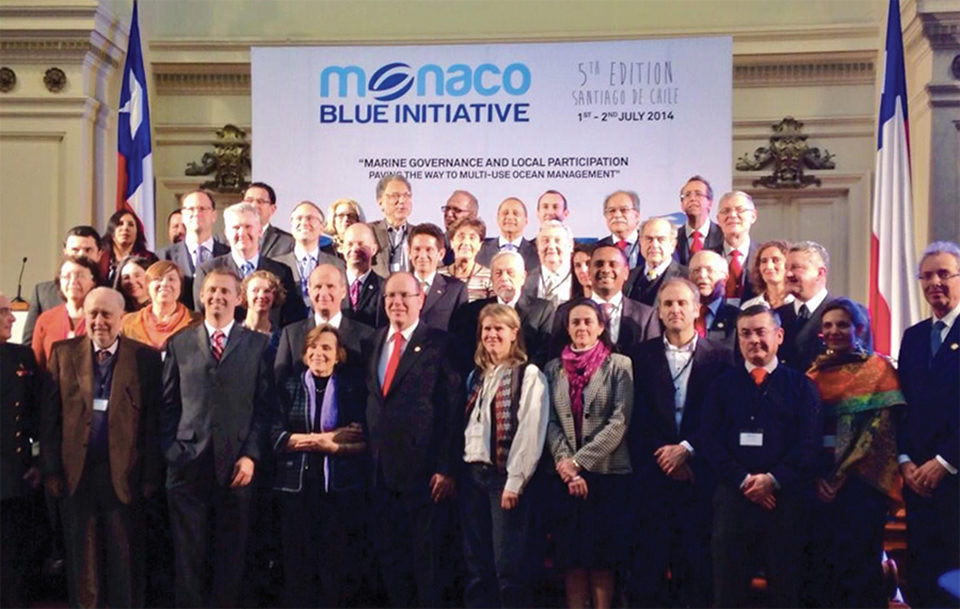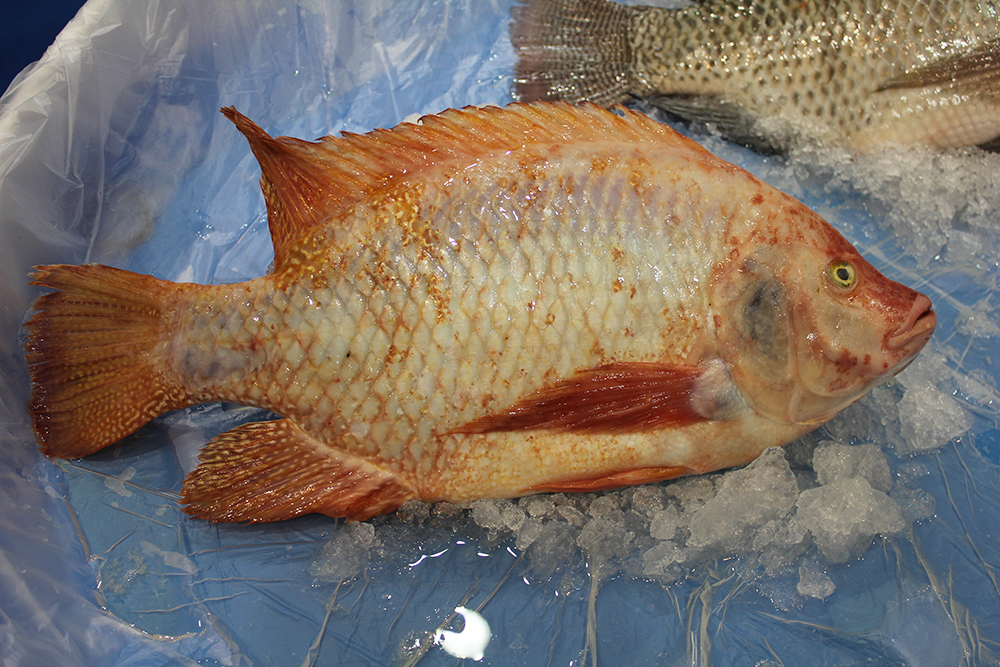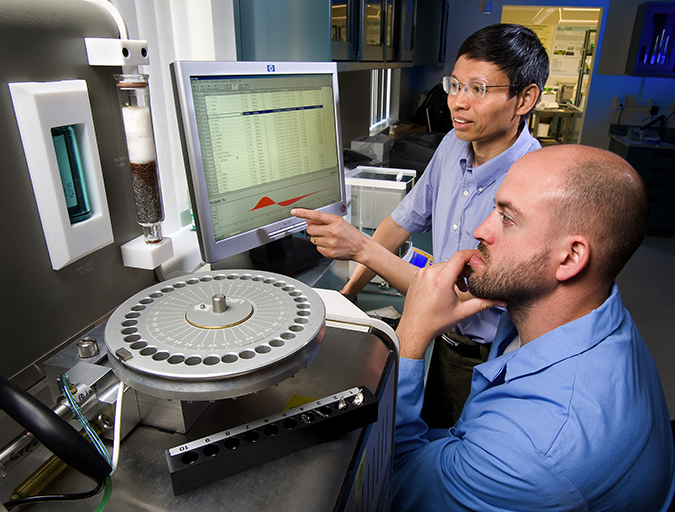Work together to maximize our use of the oceans

How many chances do you get to address royalty? Rarely, in my case, so when offered the chance to highlight the importance of aquaculture (with specific reference to Latin America) to Prince Albert II of Monaco at the Monaco Blue Initiative in Santiago, Chile, I grabbed it with both hands.
Knowing that the audience was essentially anti-aquaculture was not especially easy for me, but as an industry, we should not be afraid of confronting issues. I believe the world needs to embrace aquaculture for many reasons, but especially for food security and nutrition. Millions are hungry, and children are dying daily due to malnutrition.
As I shared with the audience during my presentation in Monaco, I hear a lot of gloom and doom about the fish industry, but what is forgotten is that fish is the world’s most traded protein. The sector is twice the size of the coffee trade. It had an estimated export value of U.S. $136 billion last year. According to an article from the environmental think tank Earth Policy Institute, global production of farmed fish has overtaken the production of beef.
More than 120 million people in the world already depend directly on fisheries-related activities, which in turn support the livelihoods of more than 1 billion people. While we can maintain wild fish harvests through strategic management and cutting out wasteful practices, however, wild fish can not support the whole population. Farmed seafood will be pivotal in helping to supply food and jobs for the future.
Healthy food
Of course you already know fish is good for you. But just how good? An outstanding graph in a report on obtaining essential omega-3 fatty acids from fish published by the High Level Panel of Experts to the United Nations Committee on World Food Security confirmed that the level of iron in beef is lower than in most fish, particularly small freshwater fish.
The knowledge on the health aspects of seafood just keeps coming. In light of the increasing evidence of neuro-developmental benefits from eating fish, the U.S. Food and Drug Administration has revised its dietary recommendations to encourage pregnant women, breast-feeding mothers and young children to eat more of it – two to three servings a week. This is an important message that needs to be heeded by all governments that want to have healthy people with fewer chronic diseases, thus alleviating heavy health costs and underpinning better gross domestic product prospects.
1,000 days program
The 1,000 day program highlights the most important period of anyone’s life – the time from conception to the second birthday, which forms an essential window of opportunity to shape healthier and more prosperous futures. The right nutrition during this 1,000-day window can have profound impacts on a child’s ability to grow, learn and rise out of poverty. It can also shape a society’s long-term health, stability and prosperity.
In the real world for children under the age of 2, the consequences of undernutrition are particularly severe and often irreversible, and reach far into the future. During pregnancy, undernutrition can devastate the healthy growth and development of a child. Babies who are malnourished in the womb have a higher risk of dying in infancy and are more likely to face lifelong cognitive and physical deficits, and chronic health problems.
Eating more fish can help. But in Australia, the Meat and Livestock Association promoted advertising espousing that we were meant to be born eating red meat! While the Neanderthals ate lots of red meat, modern humans became modern by eating lots of oysters, mussels and fish. As revealed in “When the Sea Saved Humanity,” an article in Scientific American, when the number of breeding humans crashed to about 600 in five locations across Africa, it was seafood and root vegetables that helped us survive, not red meat. As we move toward the future, and noting that the earth is 72 percent ocean, the same situation may return.
Obesity and seafood
Seafood can help tackle the global obesity crisis, said health writer Martin Bowerman, author of “Lean Forever: The Scientific Secrets of Permanent Weight Loss.” Speaking at World Aquaculture Adelaide, Bowerman said fish provided more protein for comparably lower calorie intake than other meats, and this “calorie efficiency” was key to a high-protein weight-loss diet.
In “Don’t Miss the Bus,” a new book drawing on the latest findings in neuroscience from the University of California, is a list of a dozen “Gold Medal” food groups vital to maintaining brain health and preventing dementia and Alzheimer’s disease. The only whole animal products on the list are fish – specifically salmon, trout and sardines.
In a recent report prepared for Canada’s aquaculture industry, “How Higher Seafood Consumption Can Save Lives,” the authors quoted a study from the Harvard School of Public Health and the University of Washington that found older adults with high blood levels of fish-derived fatty acids lived, on average, 2.2 years longer than those with lower levels. Increasing levels of fish consumption to the recommended levels could save about 7,000 lives in Canada annually, the report concluded.
It is the position of the U.S. Academy of Nutrition and Dietetics that dietary fat for the healthy adult population should provide 20 to 35 percent of energy, with increased consumption of omega-3 polyunsaturated fatty acids and limited intake of saturated and trans fats. Two “long-chain” omega-3 fatty acids found in fish – eicosapentaenoic acid (EPA) and docosahexaenoic acid (DHA) – are not made by the human body, meaning we need to get them from a dietary source. Many people get omega-3 fatty acids from plant sources like flax seeds and walnuts, although this type of “good” fat only partially converts to EPA and DHA in the body and doesn’t have the same amount of research behind it that omega-3s derived from fish do.
In Latin America, seafood consumption is below the world average, and in South America, Brazil had annual seafood consumption of less than 5 kg/capita until it embarked on a strong aquaculture program with tilapia that raised consumption to nearly 10 kg/capita. In Mexico, where seafood consumption has been on a downward spiral, plans and budgeting are put in place to promote seafood consumption alongside increasing aquaculture activity based on specifically training the workforce through the value chain.
Fishmeal, fish oil
There are two important points to make regarding fishmeal and fish oil. The first is that aquaculture is far from the biggest user of the products. That honor lies with land-based animals. The second is that evidence from the salmon industry shows that its investment in feed research over 20 years has enabled the quantity of fishmeal and fish oil to drop from around 89 percent of the feed to 32 percent, and more progress is expected in this area.
The anti-aquaculture lobby seems to be stuck in the past on these issues and either lacks current data or is stuck with antiquated concepts. Their emphasis often falls on feed issues regarding salmon and other carnivorous species. But the freshwater fish such as carp, tilapia and catfish that dominate global aquaculture production are herbivore species not reliant on fishmeal and fish oil.
Producing more from less is the consistent aim. Massive amounts of time, money and effort are going into feeds for the future. As an example, CSIRO Australia has perfected a prawn feed additive that results in 30 percent faster growth without using fish products. Several concepts getting attention include the use of proteins from worms, insects and algae in aquafeeds.
While all farmed animals need to be fed, aquaculture represents the most efficient method by which to convert feed to edible protein. Of course, species such as oysters and mussels do not need to be fed at all.
Perspectives
Seafood harvested from aquaculture is a complete nutrient package and the major source of animal proteins and micronutrients for many coastal populations. It is a renewable and sustainable source of polyunsaturated fatty acids for optimal brain development and the prevention of coronary heart disease, and an important source of vitamins generally scarce in rural diets. People should consume seafood weekly to comply with dietary guidelines.
I urge you to read the “Sustainable Fisheries and Aquaculture for Food Security and Nutrition” report just issued by the High Level Panel of Experts. Applying our collective “Licence to Gill,” we need to work together to maximize our use of the oceans and fully utilize the resources in sustainable growth. Working to assist the poorer nations and increasing food security and nutrition are essential elements of this work.
(Editor’s Note: This article was originally published in the September/October 2014 print edition of the Global Aquaculture Advocate.)
Author
-

Roy D. Palmer, FAICD
GILLS
2312/80 Clarendon Street
Southbank Victoria 3006 Australia
www.gillseafood.com[109,111,99,46,108,105,97,109,103,64,114,101,109,108,97,112,100,121,111,114]
Tagged With
Related Posts

Intelligence
Adding value to tilapia to tap into U.S. market
New markets for tilapia and expansion of existing ones can be created by planning and implementing properly designed geographic strategies to meet discriminating consumer preferences. Low labor costs in most producing countries promotes value-adding by the production of fresh fillets.

Aquafeeds
Alternative feed ingredient universe to convene at F3 meeting
What started out as a simple yet ambitious contest to drive innovation in the aquafeed sector has evolved into a fully global competition – and collaboration – amongst ingredient suppliers and feed manufacturers.

Aquafeeds
A new nutrient for aquaculture, from microbes that consume carbon waste
Biotechnology firm NovoNutrients aims to produce a line of nutraceutical aquafeed additives as well as a bulk feed ingredient that can supplement fishmeal. Its process includes feeding carbon dioxide from industrial gas to a “microbial consortium” starring hydrogen-oxidizing bacteria.

Health & Welfare
A holistic management approach to EMS
Early Mortality Syndrome has devastated farmed shrimp in Asia and Latin America. With better understanding of the pathogen and the development and improvement of novel strategies, shrimp farmers are now able to better manage the disease.

